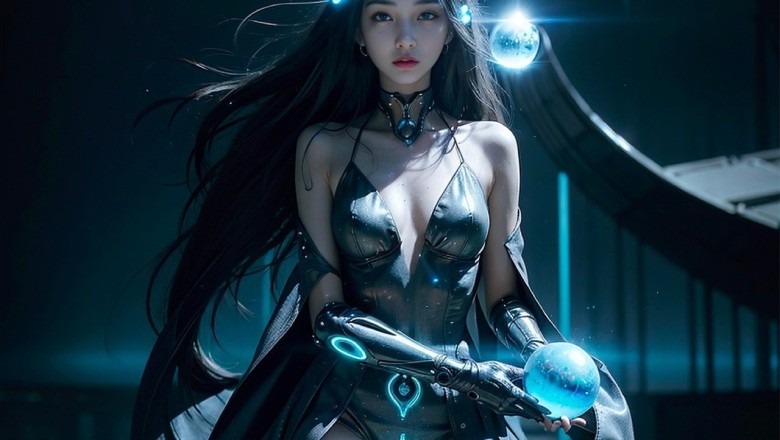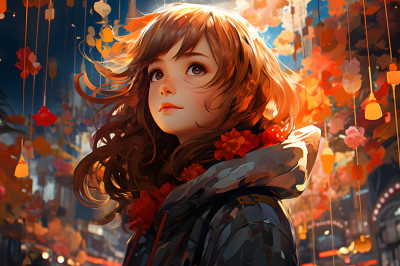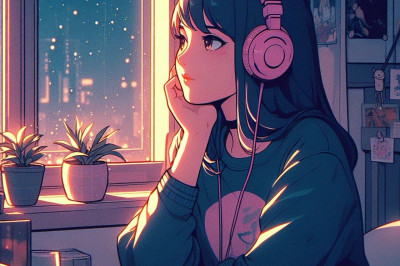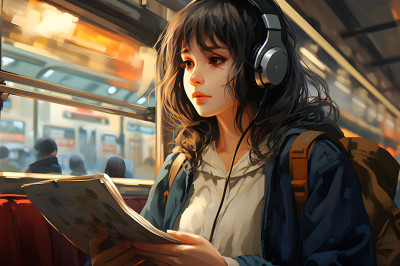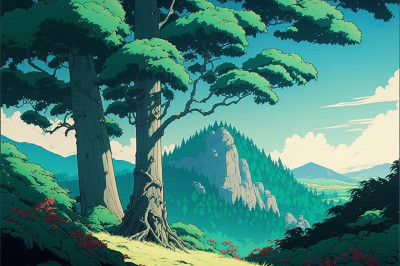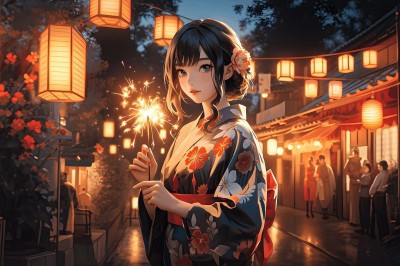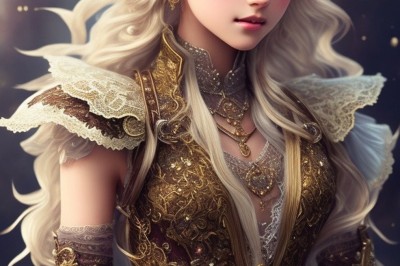Origins and Early DevelopmentThe Birth of Japanese Animation
The history of anime can be traced back to the early 20th century. The earliest known Japanese animation is attributed to Shimokawa Oten, Jun'ichi Kōuchi, and Seitaro Kitayama, often referred to as the "fathers of anime." Their works, which date back to 1917, were simple and short, but they laid the foundation for the medium. These silent short films were often screened in theaters before feature films and were heavily influenced by the animation techniques and styles from the West, particularly from France and the United States.
Pre-War Anime
During the 1920s and 1930s, anime continued to develop, with creators experimenting with different techniques such as chalkboard drawings and cutout animation. This era saw the production of works like "The Tale of the White Serpent" (Hakujaden), which is considered one of the first anime feature films. However, the industry was still in its infancy, and many films from this period have been lost due to poor archiving and the destruction caused by World War II.
World War II Influence
World War II had a significant impact on the development of anime. The medium was used for propaganda purposes, with the government commissioning films to boost national morale and disseminate its messages. One notable example from this period is "Momotaro's Divine Sea Warriors" (Momotaro: Umi no Shinpei), released in 1945, which is often cited as Japan's first feature-length animated film.
Post-War Era and the Rise of Television
After the war, the anime industry began to rebuild. The 1950s marked a turning point with the introduction of television in Japan. This new medium provided a platform for serialized animated content, which allowed for more complex storytelling and character development. The first televised anime series, "Instant History" (Sokoni Osuwari!), aired in 1961, though it is "Astro Boy" (Tetsuwan Atom), which began airing in 1963, that is often credited with shaping the modern anime industry.
Osamu Tezuka's Influence
Osamu Tezuka, known as the "God of Manga," played a pivotal role in the evolution of anime. His creation of "Astro Boy" introduced many elements that would become staples of the genre, such as the serialized format, recurring characters, and the blending of science fiction themes with human emotions. Tezuka's innovative production techniques, such as limited animation, allowed for the creation of longer episodes with lower budgets, making anime more accessible and sustainable as a television format.
Technological Advancements and New Genres
As technology advanced, so did anime. The 1960s and 1970s saw the introduction of color broadcasts, which brought anime to life in a whole new way. This period also marked the diversification of genres within anime, with series catering to different audiences, including young children, families, and adults. The creation of "Mecha" anime, with shows like "Gigantor" (Tetsujin 28-go) and "Mobile Suit Gundam," introduced complex themes of war, politics, and human psychology, expanding the scope of anime storytelling.
International Recognition
Anime began to gain international recognition in the 1970s and 1980s, with exports to various countries around the world. Shows like "Speed Racer" (Mach GoGoGo) and "Star Blazers" (Space Battleship Yamato) found success abroad, paving the way for future anime series to enter global markets. This exposure helped establish a fan base outside of Japan and contributed to the growth of anime as a significant cultural export.
The early development of anime set the stage for its evolution into a diverse and influential medium. From its humble beginnings in the early 20th century to its rise as a global phenomenon, anime has continually adapted and innovated, reflecting the changing times and technological advancements while maintaining its unique storytelling and artistic style.
The Golden Age of Anime: 1960s to 1980sThe Birth of Television Anime
The 1960s marked a significant shift in the anime industry with the advent of television. Anime transitioned from cinema screens to TV sets, making it more accessible to the general public. The first televised anime series, "Astro Boy" (Tetsuwan Atom), created by Osamu Tezuka and aired in 1963, is often credited with igniting the anime boom. Its success established a new market and set the standard for future productions.
Influential Creators and Studios
During this period, several key figures and studios emerged that would shape the anime landscape. Osamu Tezuka's Mushi Production was instrumental in the early days, while other studios like Toei Animation began to make their mark. Hayao Miyazaki and Isao Takahata, who would later found Studio Ghibli, started their careers in this era, contributing to the development of anime with their distinctive storytelling and artistic styles.
Genre Diversification and Iconic Series
The 1970s saw a diversification of genres in anime, with a rise in science fiction, mecha, and space operas. Series like "Mobile Suit Gundam" revolutionized the mecha genre by introducing complex narratives and realistic technology. Space operas such as "Space Battleship Yamato" captivated audiences with their epic scale and emotional depth. This era also saw the rise of shoujo (girls') anime, with series like "Rose of Versailles" breaking ground in historical drama and influencing future shoujo titles.
Technological Advancements and Artistic Evolution
Technological advancements in animation techniques allowed for more dynamic and visually engaging anime. The use of color became more prevalent, and the quality of animation improved significantly. Artistic styles evolved, with character designs becoming more detailed and expressive. This period also saw the introduction of the "limited animation" technique, which allowed for cost-effective production without significantly compromising quality.
International Recognition and Distribution
By the late 1970s and into the 1980s, anime began to gain international recognition. Series like "Star Blazers" (the localized version of "Space Battleship Yamato") and "Robotech" (an adaptation of several different anime series) found success abroad. The export of anime introduced global audiences to Japanese culture and storytelling, paving the way for future international collaborations and fandom.
The Rise of Anime Movies and OVA
The 1980s witnessed the rise of anime feature films and original video animations (OVA). Films such as "Akira" and "Nausicaä of the Valley of the Wind" showcased the cinematic potential of anime, receiving critical acclaim and attracting a wider audience. OVAs allowed for more creative freedom and experimentation, catering to niche markets with more mature and complex content.
Legacy and Impact on Future Generations
The Golden Age of Anime set the foundation for the medium's future success. The creative risks taken, the development of new genres, and the establishment of anime as a significant cultural export during this era had a lasting impact. The work of the pioneering artists and the popularity of their series inspired a new generation of creators and solidified anime's place in global entertainment.
The 1990s: Technological Advances and International AcclaimThe Rise of Digital Animation
The 1990s marked a significant shift in the production of anime with the introduction of digital animation techniques. This transition from traditional cel animation to digital processes allowed for more dynamic visuals and complex scenes that were previously difficult or too costly to animate. Studios began using digital painting and compositing, which streamlined the coloring process and enabled the addition of intricate effects like dynamic lighting, reflections, and smoother motion. Shows like "Neon Genesis Evangelion" showcased the potential of these new techniques, blending hand-drawn art with digital effects to create a visually stunning experience.
Breakthroughs in CGI Integration
Computer-generated imagery (CGI) began to find its place in anime during the 90s, enhancing the visual storytelling of many series and films. Early adopters of CGI used it to create backgrounds, vehicles, and other inanimate objects, which were easier to render than organic forms. The film "Ghost in the Shell" was particularly notable for its groundbreaking use of CGI, integrating it seamlessly with traditional animation to create a cybernetic world that felt both futuristic and believable.
The Advent of High Definition and Widescreen Formats
As technology advanced, so did the quality and format of anime. The introduction of high definition and widescreen formats allowed for higher resolution images and a broader visual field, changing the way anime was composed and viewed. This shift was not immediate, as it required audiences to adopt new hardware, but it set the stage for the next decade's standards in visual media.
International Distribution and Dubbing
The 1990s saw a significant expansion of anime beyond Japan's borders, with many series and films being licensed for international distribution. The process of dubbing became more sophisticated, with efforts to maintain the integrity of the original material while making it accessible to a wider audience. Series like "Dragon Ball Z," "Sailor Moon," and "Pokémon" became household names, capturing the imagination of viewers around the world and laying the groundwork for anime's global popularity.
Anime's Influence on Western Animation
As anime gained international acclaim, its influence began to permeate Western animation. Western creators started to adopt anime's visual styles, storytelling techniques, and character designs. This cross-cultural exchange led to a new generation of animated works that blended Eastern and Western sensibilities, expanding the creative horizons of animators and audiences alike.
Pioneering OVA Releases
The Original Video Animation (OVA) market thrived in the 1990s, providing a platform for more experimental and niche anime titles that might not have found a place on television or in theaters. OVAs often targeted more mature audiences with complex narratives and higher production values, due to their direct-to-video nature. This format gave rise to cult classics and allowed creators to explore themes and stories without the constraints of broadcast standards.
The Emergence of Anime Conventions
The decade also witnessed the emergence and growth of anime conventions around the world. These events became pivotal in fostering anime communities, allowing fans to celebrate their passion for the medium, meet creators, and preview upcoming releases. Conventions played a crucial role in building the international anime fandom, creating a sense of unity and shared culture among enthusiasts.
The Turn of the Century: New Genres and Digital AnimationEmergence of New Genres
The turn of the century marked a significant shift in the anime landscape with the emergence of new genres that expanded the medium's appeal. This period saw the rise of genres such as Isekai, which involves characters being transported to, reborn, or trapped in a parallel universe or fantasy world. Series like ".hack//Sign" and "Sword Art Online" later popularized this genre, exploring themes of escapism and adventure in virtual realities.
Psychological thrillers also gained prominence, challenging viewers with complex narratives and deep character studies. "Serial Experiments Lain" and "Paranoia Agent" are prime examples of this genre, delving into the human psyche and the impact of technology on society.
Sports anime evolved beyond the traditional tales of teamwork and perseverance, with series like "Prince of Tennis" and "Hajime no Ippo" offering more in-depth character development and a focus on individual struggles and triumphs.
Advancements in Digital Animation
The late 1990s and early 2000s were pivotal years for the transition from traditional cel animation to digital processes. Studios began to adopt digital coloring and compositing, which allowed for a more vibrant color palette and cleaner lines. This shift is evident in works like "Ghost in the Shell: Stand Alone Complex" and "Samurai Champloo," which showcased more dynamic and fluid animation.
Computer-generated imagery (CGI) started to integrate with traditional 2D animation, leading to new visual possibilities. "Zoids" and "Blue Submarine No. 6" were among the early adopters of this technique, blending CGI with hand-drawn art to create immersive worlds and detailed mechanical designs.
Influence of the Internet and Globalization
The internet's growing influence at the turn of the century played a crucial role in the distribution and popularity of anime. Streaming services and fan-subtitled episodes made anime more accessible to international audiences, fostering a global community of fans.
The rise of online forums and websites dedicated to anime discussions and fan creations helped spread the popularity of niche genres and series that might have otherwise remained obscure. This increased exposure led to a more diverse range of anime being produced to cater to different tastes and demographics.
Cross-Genre Experimentation
Anime creators began to experiment with cross-genre storytelling, blending elements from different genres to create unique and innovative narratives. Series like "Cowboy Bebop" combined science fiction with western and noir, while "FLCL" (Fooly Cooly) mixed coming-of-age themes with surreal comedy and science fiction.
This experimentation also led to the creation of hybrid genres, such as "Mecha-Musume," which combines the mecha genre with moe elements, characterizing mechanical concepts with cute, anthropomorphic designs.
Impact on Visual Culture and Other Media
Anime's new genres and digital animation techniques had a profound impact on visual culture, influencing not only other animation styles around the world but also live-action films, video games, and art. The aesthetic and storytelling innovations of anime began to be reflected in Western animation, with creators citing anime as a major influence on their work.
Video games, in particular, embraced anime-style art and narrative structures, leading to a fusion of interactive and narrative experiences that resonated with fans of both mediums. This cross-pollination of ideas contributed to the creation of a shared visual language that continues to evolve and inspire creators across different forms of media.
The 2000s: The Rise of Online Streaming and Fandom CultureEmergence of Online Streaming Platforms
The 2000s marked a significant shift in how anime was consumed globally, primarily due to the advent of online streaming. Early in the decade, fans often relied on fan-subtitled content, which was distributed through file-sharing services. However, as broadband internet became more widespread, the stage was set for legal streaming platforms to emerge. Companies like Crunchyroll, founded in 2006, began as a for-profit video upload and streaming site that specialized in hosting East Asian content. It quickly pivoted to become a key player in the legal distribution of anime.
Impact on Accessibility and Distribution
Online streaming dramatically increased the accessibility of anime. Where international fans once had to wait for DVDs or television broadcasts to watch anime, they could now stream their favorite shows shortly after they aired in Japan. This ease of access contributed to the growth of the anime audience worldwide and allowed for simultaneous releases, effectively shrinking the gap between Japanese and international audiences.
Transformation of Fan Subtitling
The rise of online streaming also transformed the practice of fan subtitling. While fan subs were initially a necessity for non-Japanese-speaking audiences, official streaming services began to offer professionally translated subtitles. Some platforms even incorporated the fan subbing community by hiring experienced fan subbers to provide high-quality, timely translations for their simulcasts.
Growth of Anime Fandom and Online Communities
The 2000s saw the exponential growth of anime fandom, facilitated by the internet. Online forums, social media, and dedicated anime websites became hubs for fans to discuss, share, and create content related to their favorite series. This period also saw the rise of anime conventions around the world, where fans could gather to celebrate their shared interest in anime culture.
Influence on Western Animation and Pop Culture
Anime's rising popularity in the 2000s had a noticeable influence on Western animation and pop culture. Western shows began to incorporate anime-style elements, and anime references started appearing in mainstream media. This cross-pollination helped to further legitimize anime as a significant cultural force outside of Japan.
Challenges and Controversies
The growth of online streaming was not without its challenges and controversies. Issues such as piracy, licensing disputes, and the quality of official subtitles were hot topics within the community. The anime industry grappled with how to balance the desires of international fans with the need to protect intellectual property and ensure creators were fairly compensated.
Evolution of Anime Genres and Trends
During the 2000s, anime genres and trends evolved in response to the expanding global audience. Genres such as isekai began to gain popularity, and there was a notable increase in series that were consciously designed to appeal to international fans. This decade also saw the rise of moe culture, which had a significant impact on character design and storytelling in anime.
Technological Advancements in Animation
Technological advancements in the 2000s also played a role in the evolution of anime. The increased use of digital animation techniques allowed for more detailed and dynamic visuals. This shift not only changed the aesthetic of anime but also streamlined the production process, making it easier to meet the demands of a rapidly growing market.
Conclusion
The 2000s were a transformative period for anime, marked by the rise of online streaming and the solidification of a global fandom culture. These developments not only changed how anime was distributed and consumed but also had a lasting impact on the industry and its relationship with fans around the world.
The 2010s: Anime's Global Expansion and Cross-Cultural InfluenceStreaming Services and Accessibility
The 2010s marked a significant shift in how audiences around the world accessed anime. With the rise of streaming services like Crunchyroll, Netflix, and Amazon Prime, anime became more accessible than ever before. These platforms expanded their anime libraries, offering both subtitled and dubbed versions, which catered to a diverse global audience. The ease of access contributed to anime's burgeoning popularity, as viewers no longer had to rely on physical media or late-night TV slots to watch their favorite shows.
The Impact of Social Media
Social media platforms played a crucial role in anime's global expansion. Sites like Twitter, Facebook, and Reddit allowed fans to share their favorite series, discuss episodes, and create fan art, fostering a sense of community among viewers worldwide. Viral moments from popular series often became trending topics, further amplifying anime's presence in the digital space. This online buzz helped anime titles gain traction among audiences who might not have discovered them otherwise.
Breakout Anime Hits and Mainstream Recognition
During the 2010s, several anime series broke through to mainstream audiences, achieving significant success both in Japan and internationally. "Attack on Titan," "Sword Art Online," and "One Punch Man" are prime examples of series that resonated with a wide audience, leading to merchandise, video games, and even live-action adaptations. These shows' themes and storytelling techniques transcended cultural barriers, allowing them to appeal to viewers regardless of their background.
Anime Influences in Western Media
Western media began to exhibit a noticeable influence from anime during the 2010s. Western animations like "Avatar: The Last Airbender" and its sequel "The Legend of Korra" showcased an anime-inspired aesthetic and narrative depth that resonated with fans of traditional anime. Additionally, Hollywood took notice of anime's storytelling potential, leading to adaptations of anime properties, although these were met with varying degrees of success.
Collaborations and Co-Productions
The decade also saw an increase in collaborations and co-productions between Japanese anime studios and international companies. These partnerships resulted in unique projects that blended different storytelling styles and artistic visions. For instance, the anime "Castlevania," produced by an American studio and animated by a Japanese studio, became a hit on Netflix, showcasing the potential for cross-cultural collaboration in the medium.
The Rise of Anime Conventions and Tourism
Anime conventions grew in size and number across the globe, becoming significant events that attracted tens of thousands of attendees. These conventions served as hubs for fans to celebrate their love for anime, with cosplays, panels, and exclusive screenings. Japan also experienced a surge in anime-related tourism, with fans visiting locations depicted in their favorite shows, further highlighting the cultural impact of anime outside its country of origin.
Diversification of Genres and Audiences
The 2010s saw a diversification in the types of anime being produced, with genres ranging from isekai to slice-of-life gaining popularity. This diversification helped attract a broader audience, including different age groups and demographics. Anime began to cater to niche interests while also producing works with universal themes, ensuring that there was something for everyone.
The Role of Anime in International Relations
Anime's global appeal also had an impact on international relations, with the Japanese government recognizing the medium as a valuable cultural export. Initiatives like "Cool Japan" sought to promote Japanese culture abroad, with anime at the forefront. This soft power strategy aimed to enhance Japan's image worldwide and foster cultural exchange through the shared love of anime.
The 2020s and Beyond: Innovations and the Future of AnimeThe Rise of Streaming Services and Global Accessibility
The 2020s have seen a significant shift in how anime is distributed and consumed, with streaming services like Netflix, Crunchyroll, and Amazon Prime Video becoming primary platforms for international audiences. These services have not only made anime more accessible but have also started investing in original content, known as "Netflix Original Anime," which has led to a diversification of genres and stories. The global reach of these platforms means that anime can now be simultaneously released worldwide, breaking down the barriers of localization and fostering a more immediate global fanbase.
Technological Advancements in Animation Techniques
Advancements in computer-generated imagery (CGI) and animation software have transformed the anime production process. Studios are increasingly integrating CGI with traditional 2D animation to create more dynamic visuals and complex scenes that were previously too time-consuming or expensive to produce. Tools like Unreal Engine are being used to create detailed backgrounds and environments, while motion capture technology is enhancing the realism of character movements and expressions.
The Integration of AI in Anime Production
Artificial intelligence is beginning to play a role in anime production, from automating in-between animation to assisting with colorization and even generating story concepts. AI can analyze vast amounts of data to suggest plot developments or character designs that might resonate with audiences. While there are concerns about AI's impact on the creative process, it also offers the potential to streamline production and reduce costs, making anime creation more accessible to smaller studios.
The Emergence of Virtual and Augmented Reality Experiences
Virtual Reality (VR) and Augmented Reality (AR) technologies are opening up new possibilities for anime storytelling. Fans can now immerse themselves in the worlds of their favorite shows through VR experiences, and AR applications allow characters to step into the real world. These technologies are not only enhancing the viewer experience but also creating opportunities for interactive storytelling, where viewers can influence the narrative or explore storylines from different perspectives.
The Expansion of Anime into New Genres and Themes
Anime in the 2020s is exploring a wider range of genres and themes, reflecting the diverse interests of its global audience. There is a growing trend towards stories that address social issues, such as mental health, environmental concerns, and diversity. Anime is also branching out into genres that were previously underrepresented, such as horror, documentary-style series, and experimental art pieces, pushing the boundaries of what can be considered anime.
Collaborations with International Creators and Studios
The current decade is witnessing an increase in collaborations between Japanese anime studios and international creators. These partnerships are resulting in unique blends of storytelling and animation styles, as seen in productions like "Castlevania" and "Cannon Busters." By combining different cultural perspectives, these collaborations are enriching the anime medium and paving the way for more innovative and globally resonant content.
The Role of Fandom in Shaping Anime's Future
Anime fandom has become a powerful force in the industry, influencing which series get greenlit and how they are distributed. Fan-driven campaigns on social media can lead to the revival of classic series or the adaptation of popular manga and light novels. Crowdfunding platforms are also enabling fans to directly support the creation of anime projects, giving rise to a more fan-centric approach to production and allowing niche series to find their audience.
Sustainability and Ethical Practices in Anime Production
As awareness of working conditions in the anime industry grows, there is a push towards more sustainable and ethical production practices. Initiatives to improve the welfare of animators, such as better pay and working hours, are gaining traction. Studios are also exploring ways to reduce their environmental impact, from using more energy-efficient technology to adopting digital rather than paper-based production methods. These changes are not only important for the well-being of industry professionals but also for ensuring the long-term viability of the anime industry.
The Lasting Impact of Anime on Popular CultureGlobal Influence and Integration
Anime has transcended its origins in Japan to become a global phenomenon, influencing a wide range of cultural sectors. Its unique storytelling, art style, and themes have been integrated into various forms of media, including Western animation, cinema, and digital arts. The anime aesthetic has become a staple in the world of fashion, with clothing lines and high-end designers drawing inspiration from its vibrant and distinctive styles.
Fandom and Community Building
The rise of anime has led to the formation of dedicated communities around the world. These communities are not just passive consumers; they actively participate in the creation and dissemination of fan art, fan fiction, and a wide array of fan-made content. Conventions such as Anime Expo and Comic-Con have become cultural landmarks, drawing in thousands of attendees who celebrate their shared passion for anime and its related subcultures.
Influence on Storytelling and Themes
Anime has introduced a plethora of new storytelling techniques and themes to the global audience. Its complex narratives, character development, and willingness to explore mature and philosophical themes have challenged and expanded the boundaries of what is possible in animation. Western creators have adopted narrative structures and character archetypes that were pioneered by anime, enriching their own storytelling traditions.
Technological Advancements and Innovations
The anime industry has been at the forefront of technological advancements in animation. Techniques such as digital coloring, computer-generated imagery (CGI), and improvements in voice acting have been refined through anime production. These innovations have not only enhanced the quality of anime itself but have also been adopted by animation studios around the world, influencing the broader field of animated media.
Merchandising and Economic Impact
Anime has become a significant economic force, with its impact felt in the merchandising sector. From action figures and apparel to video games and collectibles, anime has spawned a lucrative market for related products. This merchandising extends beyond the realm of niche hobbyists to mainstream consumers, demonstrating the wide-reaching appeal of anime.
Cross-Cultural Exchange and Collaboration
The popularity of anime has facilitated cross-cultural exchanges and collaborations between Japan and other countries. Co-productions between Japanese studios and international partners have become more common, leading to a fusion of creative ideas and storytelling techniques. This collaboration has not only enriched the anime industry but has also fostered a greater understanding and appreciation of different cultures.
Shaping Modern Media Consumption
Anime has played a pivotal role in shaping modern media consumption habits. The rise of streaming services and the internet has made anime more accessible than ever before, allowing for simultaneous global releases and a democratization of content availability. This ease of access has contributed to the growth of anime's audience and has influenced how media is consumed and distributed worldwide.
Legacy and Future Prospects
As anime continues to evolve, its legacy is evident in the lasting impact it has had on popular culture. It has challenged conventions, inspired creators, and brought together people from all walks of life. Looking to the future, anime is poised to remain a dynamic and influential force in the entertainment industry, continuing to shape popular culture in unforeseen and exciting ways.



